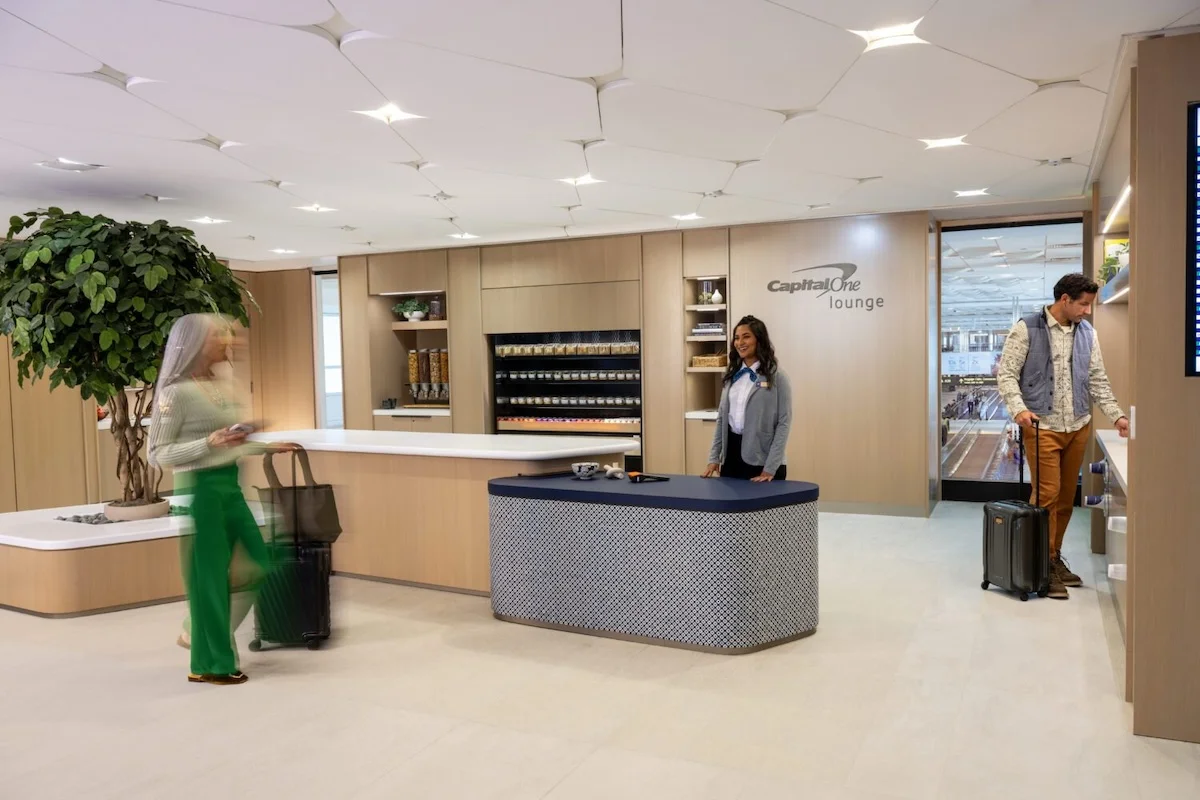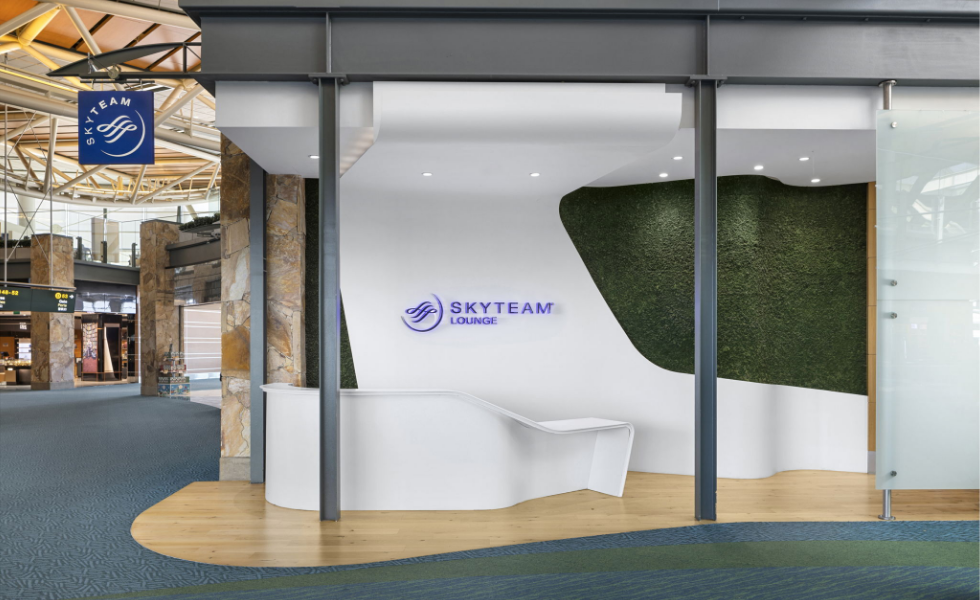Portland Debuts New Airport Terminal Inspired by Pacific Northwest Wilderness
The new terminal features a spectacular timber roof, live plants, and the airport's iconic carpet
by Lauren Smith
August 14, 2024
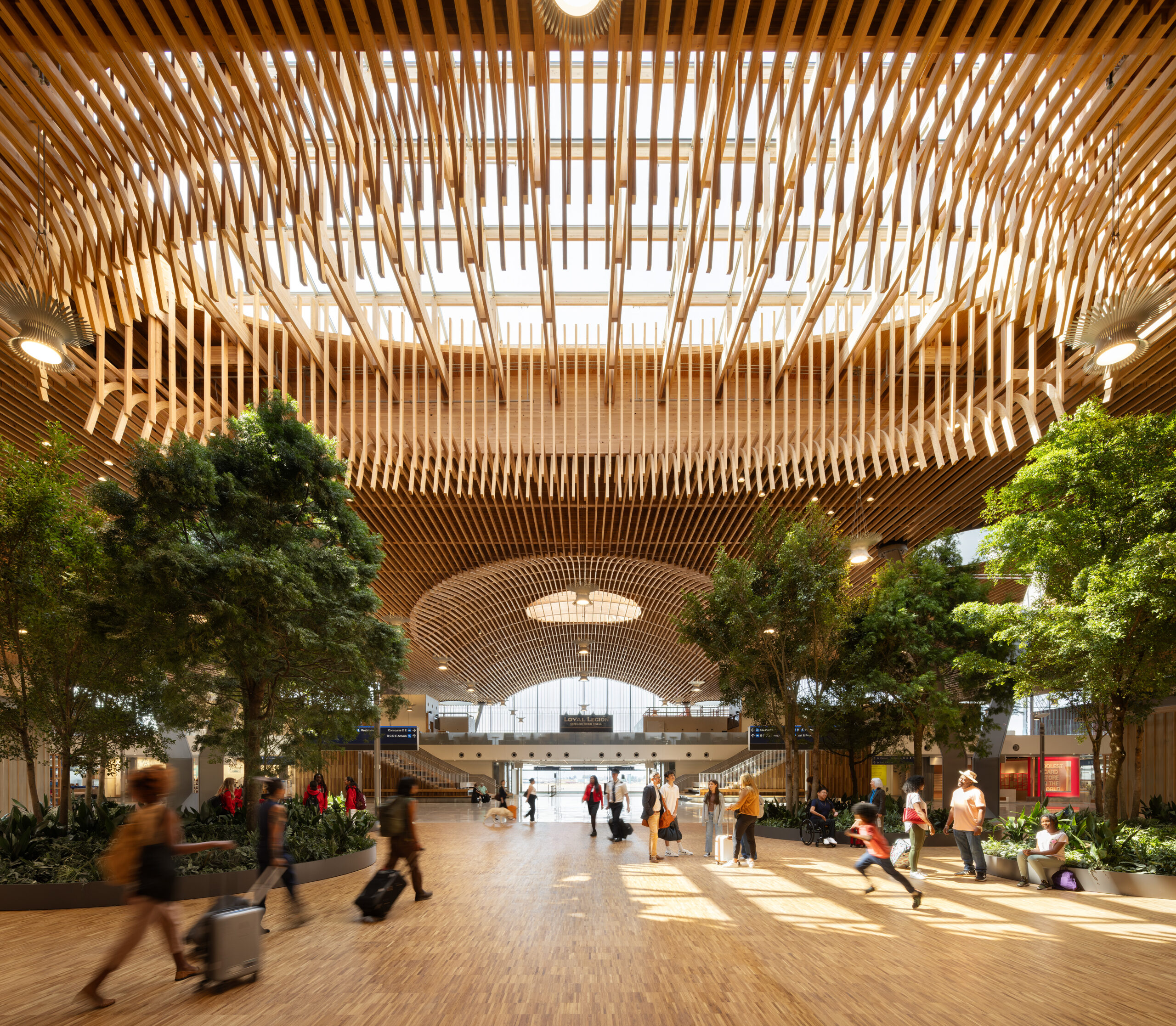
Photo: Courtesy of Port of Portland / PDX
Portland International Airport (PDX) is finally drawing back the curtain on its reimagined main terminal—a space that conjures the famed wilderness of the Pacific Northwest with a timber roof, lush living foliage, abundant natural light, and real roots in the local area.
Airport operator Port of Portland has been working on PDX’s main terminal since 2020 and has invested more than $2 billion in the project—paid for by the airport’s airlines and vendors. While the project isn’t quite complete, the pre-security terminal opened to guests on Wednesday. And it’s sure to make an impression on even the most jet-lagged and jaded travelers.
Sustainable and Biophilic Design Elements
The lobby, check-in, and security areas are covered by a soaring pre-fabricated roof, which is the largest mass timber structure of its kind.
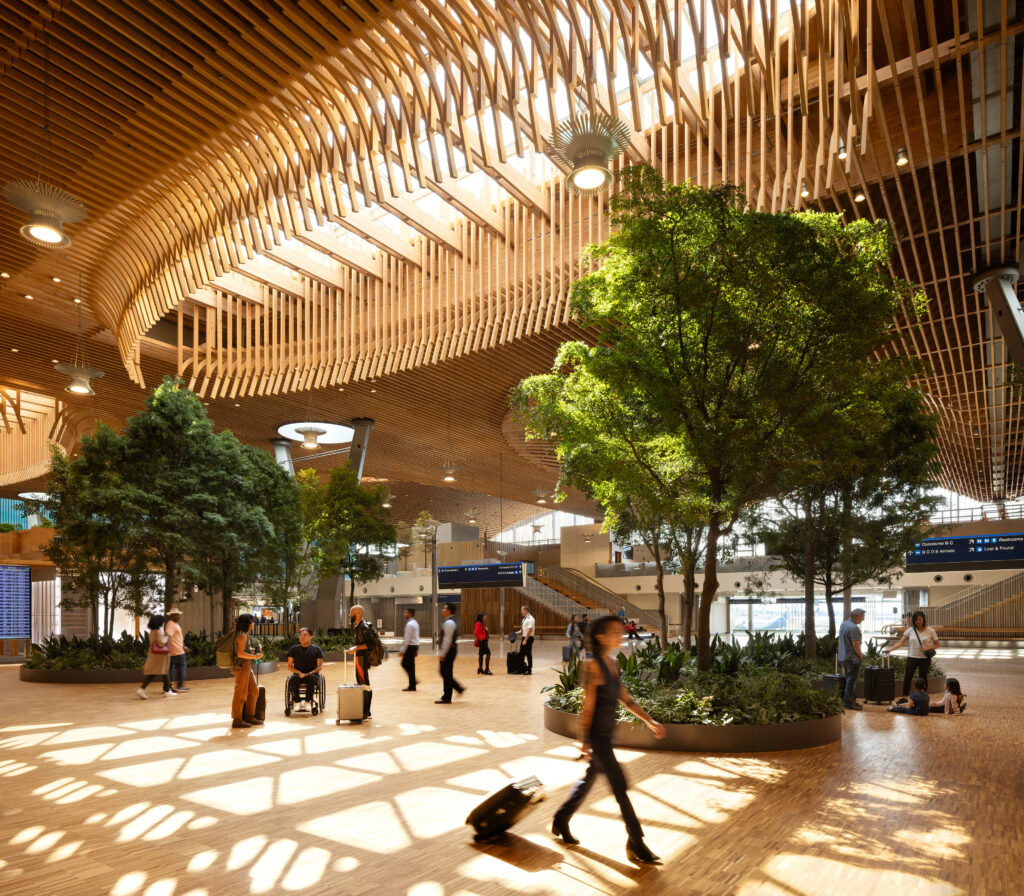
Photo: Courtesy of Port of Portland / PDX
All 3.5 million feet of Douglas fir timber used in the roof and lobby were sustainably harvested from within 300 miles of the airport. This includes timber from family-owned forests, non-profits, and tribal nations. The Port of Portland highlighted that this construction demonstrates what is possible for the future of mass timber design and sustainable wood sourcing.
The roof has 49 skylights that allow natural light to illuminate the hall, which nurtures both the 72 living trees planted below it and the passengers.
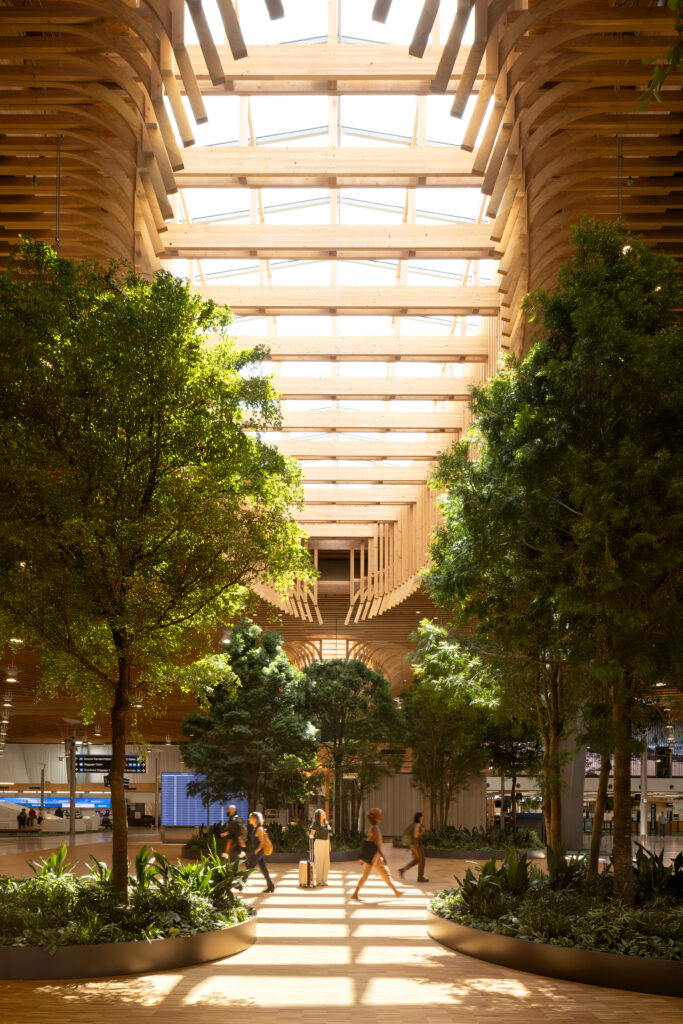
Photo: Courtesy of Port of Portland / PDX
Port of Portland says this “biophilic design” can “lower travelers’ stress, blood pressure, and heart rate” and make them feel like a journey from the check-in desk to security is “like a stroll through a Pacific Northwest forest.”
“We wanted travelers to know they were in the Pacific Northwest before they even left the airport. And for locals, we wanted it to feel like home,” Vince Granato, Chief Projects Officer at the Port of Portland, said.
Enhanced Passenger Experience
The space also invokes the city of Portland, especially its pedestrianized streets. Benches are clustered under the lobby’s black walnut, ficus, and olive trees, and shops and restaurants are nestled in tree-lined plazas.

Photo: Courtesy of Port of Portland / PDX
In fact, PDX thinks the airport’s lobby is so inviting that it will attract non-travelers, much as Singapore’s verdant Changi Airport (SIN) does.
The new terminal replaces a hodgepodge of buildings from the 1950s, which Allison Ferre, media relations manager with the Port of Portland, told CNN “wasn’t designed for how we travel post-9/11 with TSA.”
However, rather than raze the existing terminal to the ground, the Port of Portland took a more sustainable approach and evolved the terminal, incorporating old buildings and streamlining the structure with the roof.

Photo: Courtesy of Port of Portland / PDX
The new space is bigger and moves passengers more quickly to their gates, doubling the airport’s capacity. By 2045, PDX should be able to welcome 35 million travelers annually, up from around 20 million today.
Security checkpoints have also been updated with the latest technology. At each, a wood-paneled room allows passengers to be screened in private.
A phased construction strategy meant the airport was fully operational throughout the renovation.
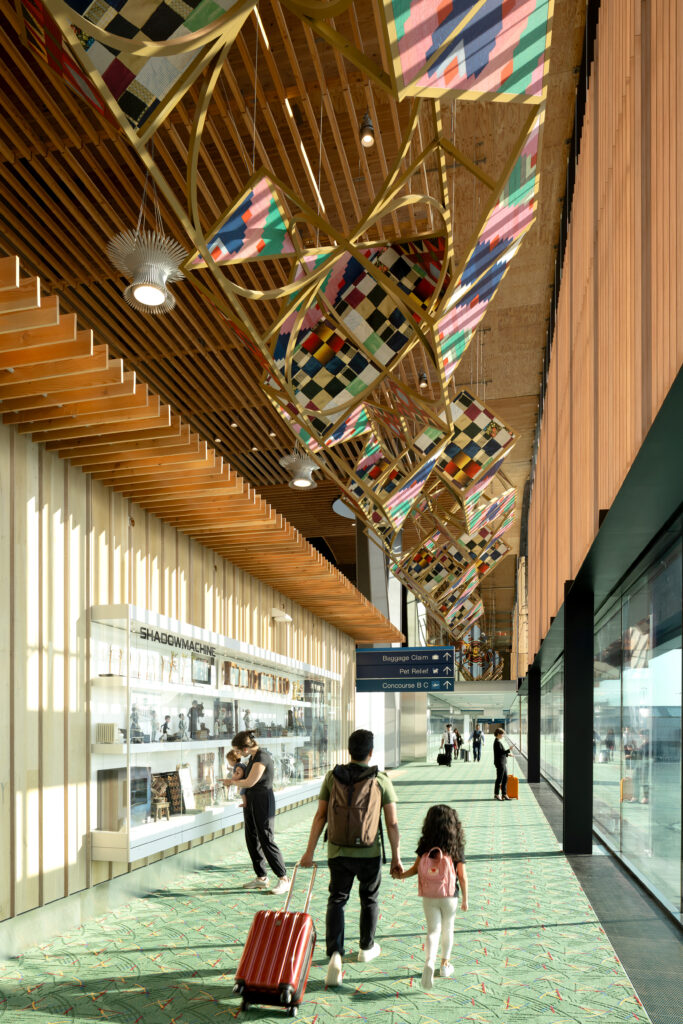
Photo: Courtesy of Port of Portland / PDX
“The design evokes the best of our region yet offers other airports a new model for how to expand and renovate in place to meet the travel demands of the future generations,” said Sharron van der Meulen, managing partner at ZGF, the Portland-based architectural firm behind the transformation.
Future-Proofed and Sustainable Credentials
Adding to the airport’s sustainability credentials is its heating system: an efficient, all-electric ground-source heat pump that reduces the terminal’s energy usage by 50 percent per square foot.
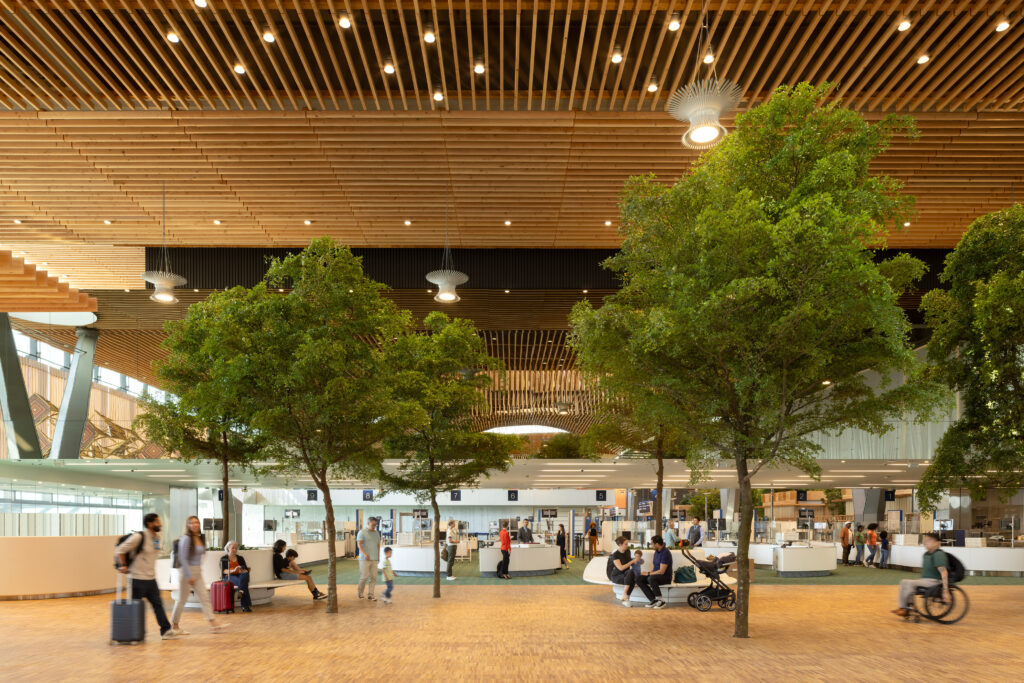
Photo: Courtesy of Port of Portland / PDX
The terminal is also future-proofed against natural disasters: resilient design means the building could withstand a 9.0 magnitude earthquake in the Cascadia Subduction Zone off Oregon’s Pacific coast.
The Beloved Teal Carpet Returns
However, with one design aspect, the PDX looks backward and into its own history. The new space will incorporate the airport’s jazzy teal carpet, installed in the 1980s and so beloved by locals it’s cropped up on hats, socks, and shirts and even has its own beer (an unconventional, citrusy IPA from Rogue Ales).

Photo: Courtesy of Port of Portland / PDX
Most of the carpet was stripped out in 2015 and replaced by a more subtle teal, but PDX has recreated the original for the renovation. Using a sample, manufacturers painstakingly matched the color and pile height of the old carpet.
Six thousand square feet of the recreated carpet is showcased in two seating areas in the pre-security area. However, the remainder of the floor is terrazzo and Oregon white oak, which is easier for strollers, wheelchairs, and rolling bags to navigate, Ferré told The Oregonian.
Meanwhile, construction is underway for the second phase of the project. Two exit areas and additional retail and dining concession spaces are due to open in early 2026.


